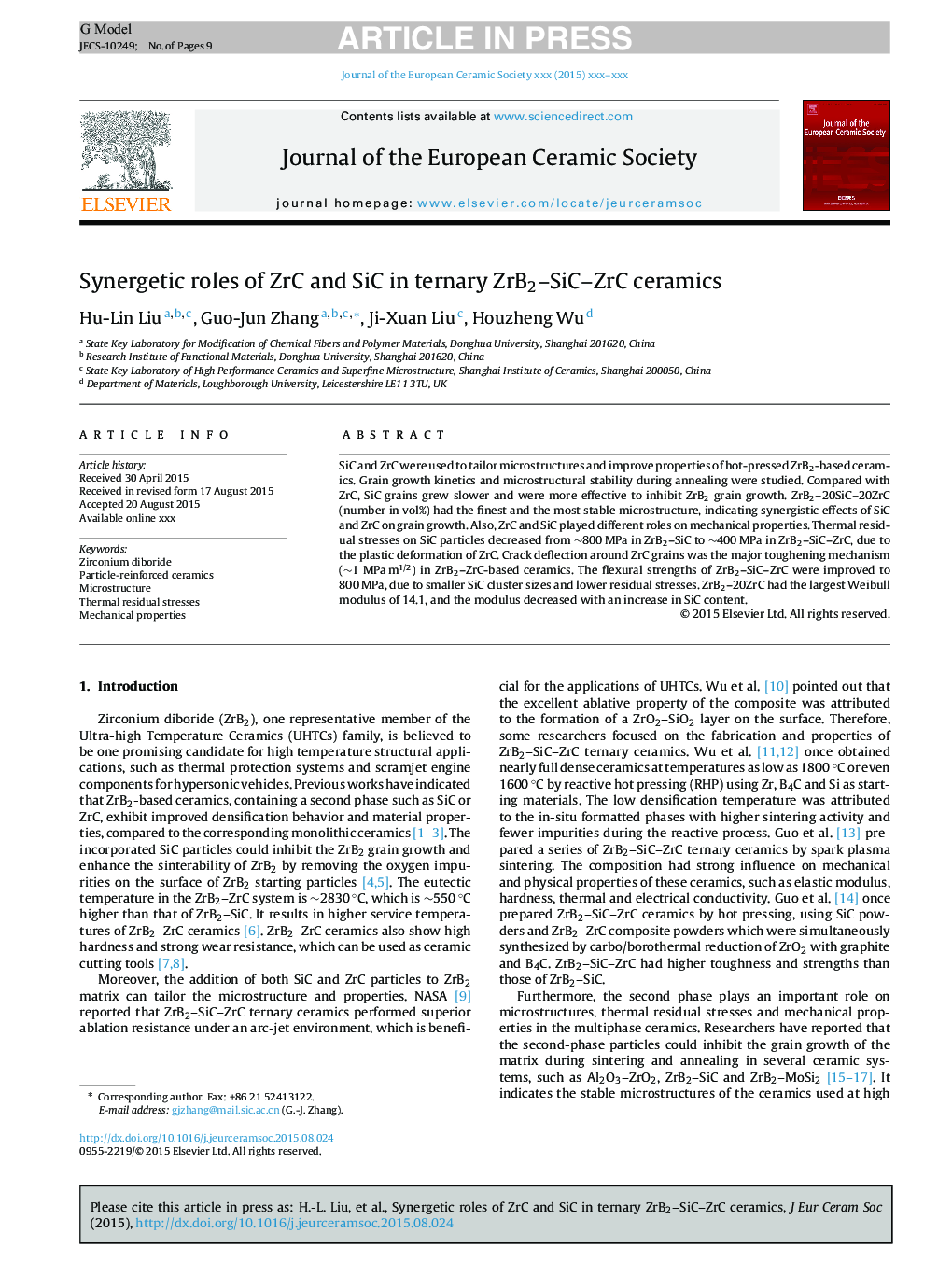| Article ID | Journal | Published Year | Pages | File Type |
|---|---|---|---|---|
| 10629490 | Journal of the European Ceramic Society | 2015 | 9 Pages |
Abstract
SiC and ZrC were used to tailor microstructures and improve properties of hot-pressed ZrB2-based ceramics. Grain growth kinetics and microstructural stability during annealing were studied. Compared with ZrC, SiC grains grew slower and were more effective to inhibit ZrB2 grain growth. ZrB2-20SiC-20ZrC (number in vol%) had the finest and the most stable microstructure, indicating synergistic effects of SiC and ZrC on grain growth. Also, ZrC and SiC played different roles on mechanical properties. Thermal residual stresses on SiC particles decreased from â¼800 MPa in ZrB2-SiC to â¼400 MPa in ZrB2-SiC-ZrC, due to the plastic deformation of ZrC. Crack deflection around ZrC grains was the major toughening mechanism (â¼1 MPa m1/2) in ZrB2-ZrC-based ceramics. The flexural strengths of ZrB2-SiC-ZrC were improved to 800 MPa, due to smaller SiC cluster sizes and lower residual stresses. ZrB2-20ZrC had the largest Weibull modulus of 14.1, and the modulus decreased with an increase in SiC content.
Related Topics
Physical Sciences and Engineering
Materials Science
Ceramics and Composites
Authors
Hu-Lin Liu, Guo-Jun Zhang, Ji-Xuan Liu, Houzheng Wu,
